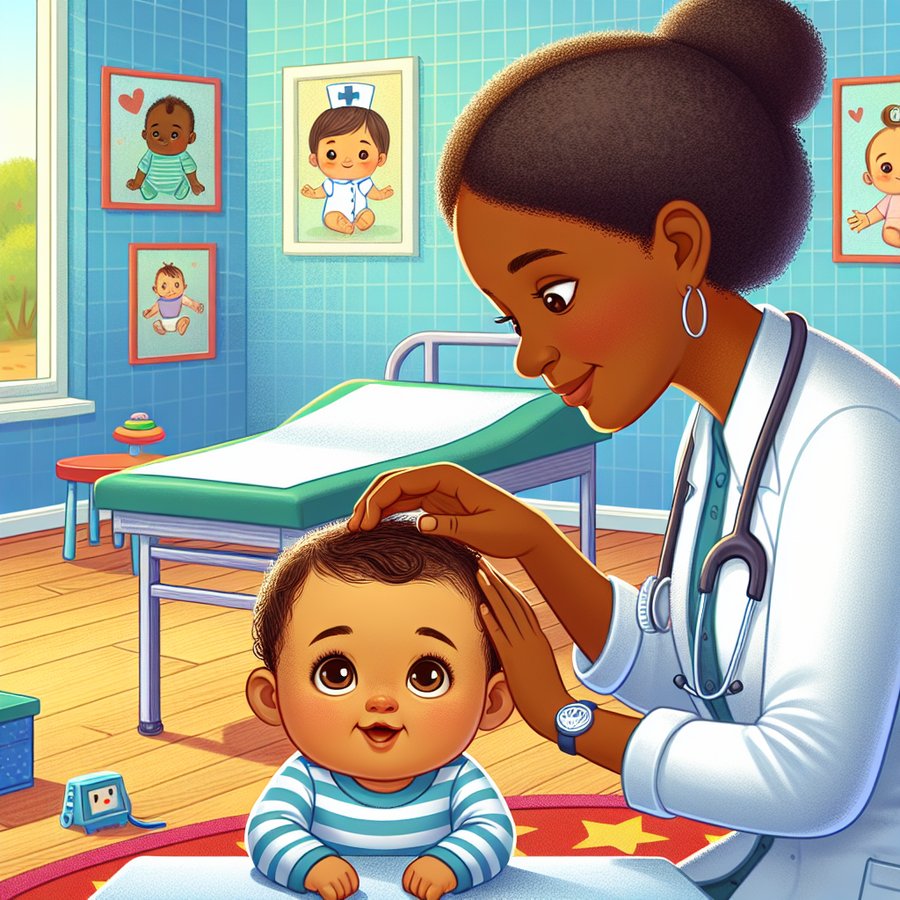Fontanelles, often referred to as baby’s soft spots, are crucial areas of a baby’s skull that intrigue and sometimes worry new parents. These soft spots are more than just unique features; they play significant roles in your baby’s growth and development. In this comprehensive article, we’ll delve into what fontanelles are, their importance, and how to care for them, ensuring you’re well-informed and confident in handling your little one’s needs.
What Are Fontanelles?
Fontanelles are soft, membranous gaps between the bones of a baby’s skull. They allow the skull to be flexible enough to pass through the birth canal during delivery. Additionally, these soft spots enable the brain to grow rapidly in the first year of life. Typically, a baby has two prominent fontanelles on the top and back of their head, known as the anterior and posterior fontanelles.
The anterior fontanelle, located at the top of the head, is the larger of the two and usually closes by the time a child is 18 to 24 months old. The posterior fontanelle, found at the back of the head, is smaller and tends to close earlier, generally by the time a baby is 1 to 2 months old. It’s essential to monitor the closure of these fontanelles as part of your baby’s development.
Why Are Fontanelles Important?
Fontanelles serve several critical functions in a baby’s early development. Their primary role is to facilitate the birth process and accommodate the rapid growth of the brain during infancy. The flexibility provided by these soft spots allows the baby’s head to adapt as it moves through the birth canal. Furthermore, the presence of fontanelles enables doctors to assess a baby’s hydration and intracranial pressure, offering vital clues to the baby’s overall health.
Additionally, fontanelles are windows to your baby’s brain health. During routine check-ups, pediatricians examine these areas to ensure there’s no abnormal bulging or sinking, which could indicate underlying health issues. Hence, fontanelles not only support physical growth but also act as indicators for potential medical concerns.
How to Care for Your Baby’s Fontanelles
Caring for your baby’s fontanelles involves gentle handling and being observant. While these soft spots might seem vulnerable, they are protected by a tough membrane, making them more resilient than they appear. When washing or touching your baby’s head, apply gentle pressure and avoid any direct, hard impact on the fontanelles.
It’s also crucial to monitor the development of your baby’s fontanelles. If you notice any significant changes, such as the fontanelles closing too early (premature cranial suture closure) or not closing within the expected timeframe, it’s important to consult your pediatrician. These could be signs of developmental issues that may require further investigation.
When to Seek Medical Advice
If your baby’s fontanelles appear unusually bulging, sunken, or if there are any other concerns related to their head shape and size, it’s essential to seek medical advice. Bulging fontanelles could be a sign of increased intracranial pressure, while sunken fontanelles might indicate dehydration. Both conditions warrant immediate attention from a healthcare professional to ensure your baby’s health and wellbeing.
In addition, if you observe that the fontanelles are closing too rapidly or too slowly, it’s important to consult with your pediatrician. They can assess if there are any underlying issues that need to be addressed. Early detection and management of potential problems can make a significant difference in your child’s development.
Fontanelles: A Sign of Healthy Development
In summary, fontanelles are not just soft spots on your baby’s head but vital indicators of their growth and development. By understanding what fontanelles are, their importance, and how to care for them, you can ensure that your baby’s development is on the right track. Remember, gentle care and observance are key to managing your baby’s fontanelles effectively.
For more information on your baby’s development and health, explore topics such as breastfeeding, developmental milestones, and baby acne on our website. Knowledge is power, especially when it comes to caring for your precious little one.













